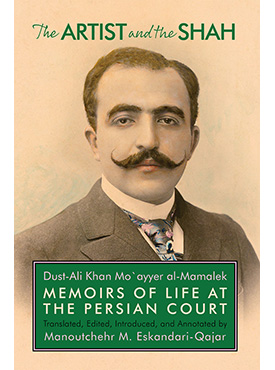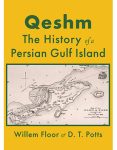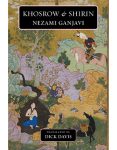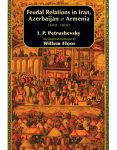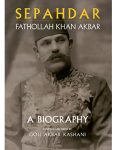About the Book
To the task of chronicling the waning years of Persia’s Qajar court, Dust-Ali Khan “Mo`ayyer al-Mamalek” (1876–1966) brought matchless gifts. On his mother’s side, he was the grandson of Naser al-Din Shah, ruler of Qajar Iran from 1848 to 1896; on his father’s side, he was the descendant of a family of assayers and masters of the royal mint with roots in the Safavid era (1501–1736). He was also a painter and writer with a keen eye for atmosphere and detail. Throughout his long life, he kept journals of the rarefied and sometimes turbulent world in which he moved. Some of those records were incorporated by him into autobiography or descriptions of his grandfather’s court—its modes of governance, festivals, royal hunts, palaces and gardens, life in the harem, and much more.
The Artist and the Shah is the product of a seven-year labor of love by Manoutchehr Eskandari-Qajar, a dedicated historian of the Qajar era, to not only translate two of Dust-Ali Khan’s memoirs but also to gather together 280 photographs from public archives and private collections. Most of the photographs are presented here for the first time in their proper context. Illuminated with the words of Dust-Ali Khan, they provide a uniquely intimate view of an era now long vanished.
Reviews
Eskandari-Qajar has produced a delightful translation of the memoirs of a subtle observer of the late Qajar era. The copious notes and the excellent collection of photographs further enhance our understanding of court and high culture of a bygone era from the artistic vantage point of a member of the old nobility.
—Abbas Amanat, Yale University, author of Iran: A Modern History
This book is as enlightening as it is beautiful.
—Houchang Chehabi, Boston University
Manoutchehr Eskandari-Qajar’s study is an extraordinary achievement. On the basis of less than a hundred and fifty pages of Persian text, written more than sixty years ago, he has created a work of meticulous, painstaking scholarship, whilst at the same time revealing in a highly readable and accessible way a remote, unfamiliar world with great sympathy and understanding.
—John Gurney, Wadham College, Oxford {read the full review}
Contents/Excerpt
About the Author
Manoutchehr Eskandari-Qajar received his Magister in International Relations and International Law from the University of Vienna in 1980 and his M.A and PhD in Political Theory from the University of California, Santa Barbara in 1982 and 1984 respectively. He is Professor of Political Science and Founder/Director of the Middle East Studies Program at Santa Barbara City College. He is co-founder and past president of the International Qajar Studies Association (IQSA), a scholarly association dedicated to the study of the Qajar era. In 2009, he joined a team of scholars at Harvard University working on the NEH-funded Women’s Worlds in Qajar Iran Harvard Project. In 2013, Eskandari-Qajar was selected California Professor of the Year by the Carnegie Foundation for the Advancement of Teaching.
Mage published his translation of the Tarikh-e `Azodi, Life at the Court of the Early Qajar Shahs in 2014

